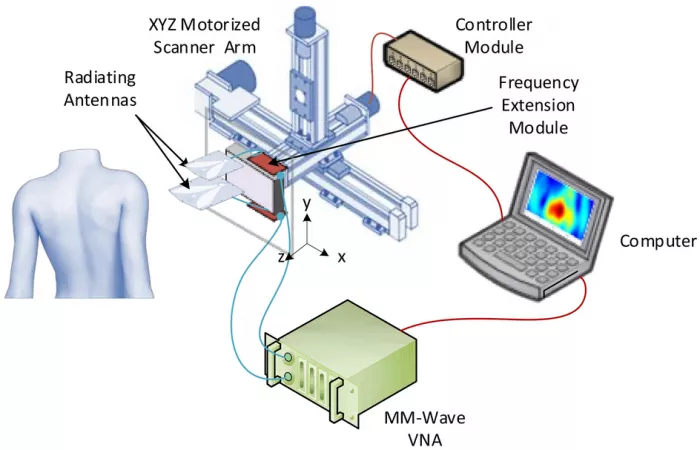Skin biopsies are unpleasant: doctors cut small pieces of tissue for laboratory tests, leaving patients with painful wounds that may take weeks to heal. If early cancer treatment can be achieved, the price is worth paying. However, in recent years, active diagnostic work has seen the number of biopsies increase about four times faster than the number of cancers detected. Now, for every incidence rate of skin cancer, about 30 benign lesions are biopsied* Stevens Institute of technology researchers are now developing a low-cost handheld device that can halve the rate of unnecessary biopsies * and provide dermatologists and other first-line doctors with access to laboratory level cancer diagnosis.

"We're not trying to get rid of biopsies. But we do want to provide doctors with additional tools to help them make better decisions," said negar tavasolian, director of the bioelectromagnetic laboratory at Stevens Institute of technology
The team's equipment uses millimeter wave imaging - the same technology used by airport security scanners - to scan patients' skin. (in early work, tavassolian and her team had to use skin that had been biopsied so that the device could detect whether it was cancer.)
The reflection of millimeter wave rays by healthy tissues is different from that of cancer tissues, so it is theoretically possible to detect cancer by monitoring the contrast of rays reflected from the skin. In order to introduce this method into clinical practice, researchers use algorithms to fuse signals captured by multiple different antennas into a single ultra-high bandwidth image, reduce noise and quickly capture even the smallest mole or flaw high-resolution image.

Under the leadership of Dr. Amir mirbeik, the team used the desktop version of their technology in the actual clinical visit to examine 71 patients and found that their method can accurately distinguish benign and malignant lesions in just a few seconds. Using their equipment, tavassolian and mirbeik can identify cancer tissues with 97% sensitivity and 98% specificity - a rate that can even compete with the best hospital level diagnostic tools.
"There are other advanced imaging technologies that can detect skin cancer, but they are large, expensive machines that are not common in clinic," tavasolian said in her work published in [scientific report] on March 23( https://www.nature.com/articles/s41598-022-09047-6 ) 》Come on. "We are creating a low-cost device that is as small as a mobile phone and easy to use, so we can give everyone access to advanced diagnostic technology."
Because the team's technology can provide results in a few seconds, it can one day replace dermatoscope in routine examination and provide extremely accurate results almost immediately. "This means that doctors can incorporate accurate diagnostic methods into routine tests and eventually treat more patients," tavasolian said

Unlike many other imaging methods, millimeter wave rays can innocuously penetrate human skin by about 2mm, so the team's imaging technology can provide clear three-dimensional images of scanned lesions. In the future, the improvement of the algorithm driving the device can greatly improve the mapping of lesion edges, make the biopsy of malignant lesions more accurate and less traumatic.
The next step is to package the team's diagnostic kit into an integrated circuit, which will soon reduce the production cost of functional handheld millimeter wave diagnostic equipment to $100 a unit - only a small part of the existing hospital level diagnostic equipment. The team is already working to commercialize their technology and hopes to start delivering their equipment to clinicians within the next two years.
"The way forward is clear. We know what we need to do. After this proof of concept, we need to miniaturize our technology, reduce the price and bring it to market," tavasolian said